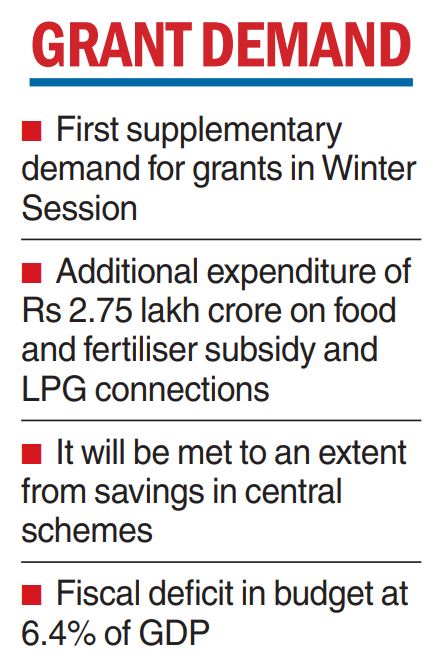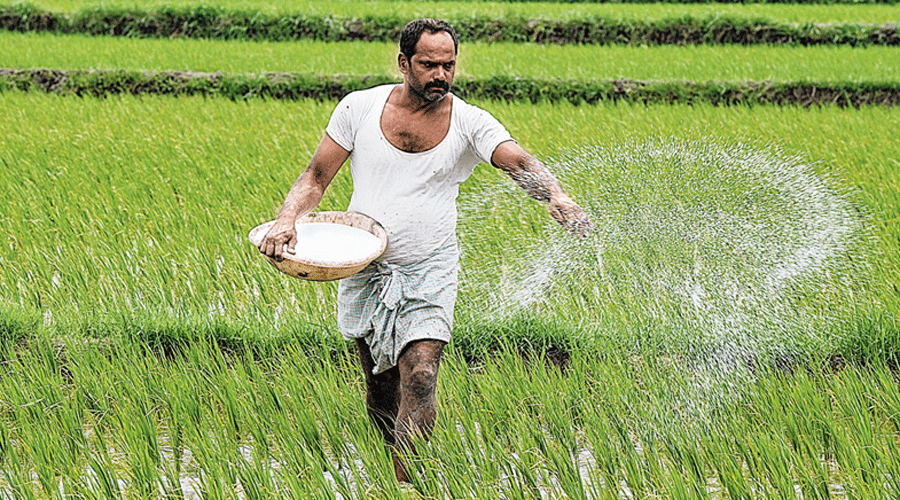The finance ministry is likely to table its first supplementary demand for grants next month at the beginning of the winter session of Parliament.
Initial estimates indicate the Centre will need funds to meet its additional expenditure on food and fertiliser subsidy, though it is confident of meeting the fiscal deficit target of 6.4 per cent.
The government is banking on savings in centrally sponsored schemes and central sector schemes to meet the additional expenditure of about Rs 2.75 lakh crore in subsidies, officials said.
This includes Rs 1.25 lakh crore on account of Pradhan Mantri Garib Kalyan Ann Yojana (PMGKAY) for April-December 2022, Rs 1.3 lakh crore extra on fertiliser subsidies and an additional Rs 20,000 crore on LPG subsidies.

The fertiliser subsidy has shot up on account of the surge in urea prices in the wake of the Ukraine-Russia crisis.
More funds are required under food subsidy as the cabinet has approved the extension of the Pradhan Mantri Garib Kalyan Ann Yojana (PMGKAY) scheme for another three months till December 2022. Under this scheme, free food grains at 5 kg per person per month are given to around 80 crore people.
Analysts said in spite of the high nominal GDP growth and buoyant tax collections, the fiscal deficit remains high and without any expenditure cuts, it may touch 6.6 per cent of GDP.
Given the upcoming state and national elections, expenditure rationalisation seems unlikely. And any slippage may be financed through higher short-term borrowings and other sources such as small savings and cash balances.
Aditi Nayar, chief economist, Icra said: “The additional expenditure in the supplementary demands could aggregate to Rs. 3.5-4 trillion, dominated by fertiliser and food subsidy. The extent of savings is unclear at present and could be driven by the lower cost of wheat procurement. We do not expect the fiscal deficit to overshoot the budget estimate (BE) by more than Rs 1 trillion.”
The Centre will also make some savings on the central sector schemes as it has asked the autonomous bodies/implementing bodies to either use or return unutilised funds.










